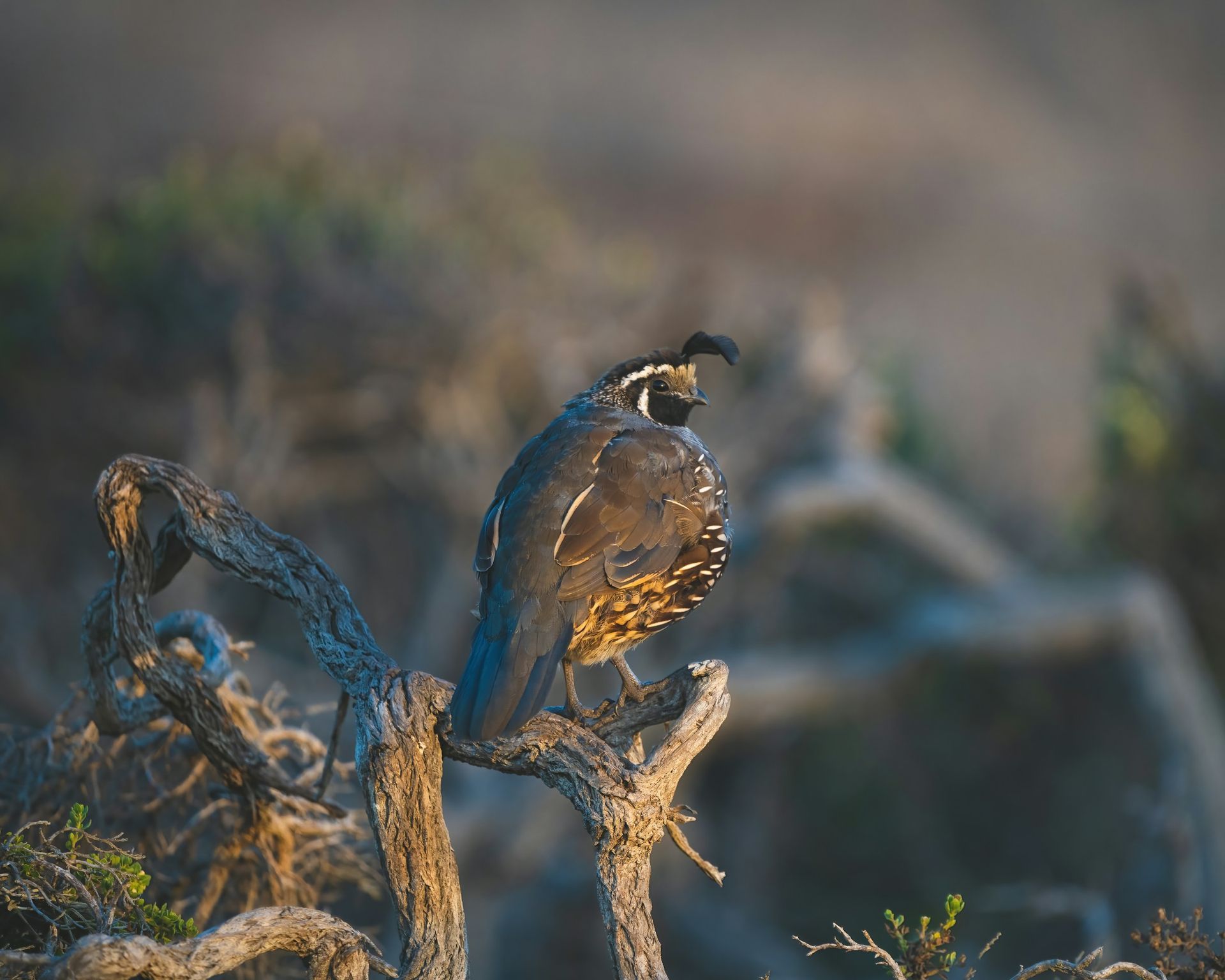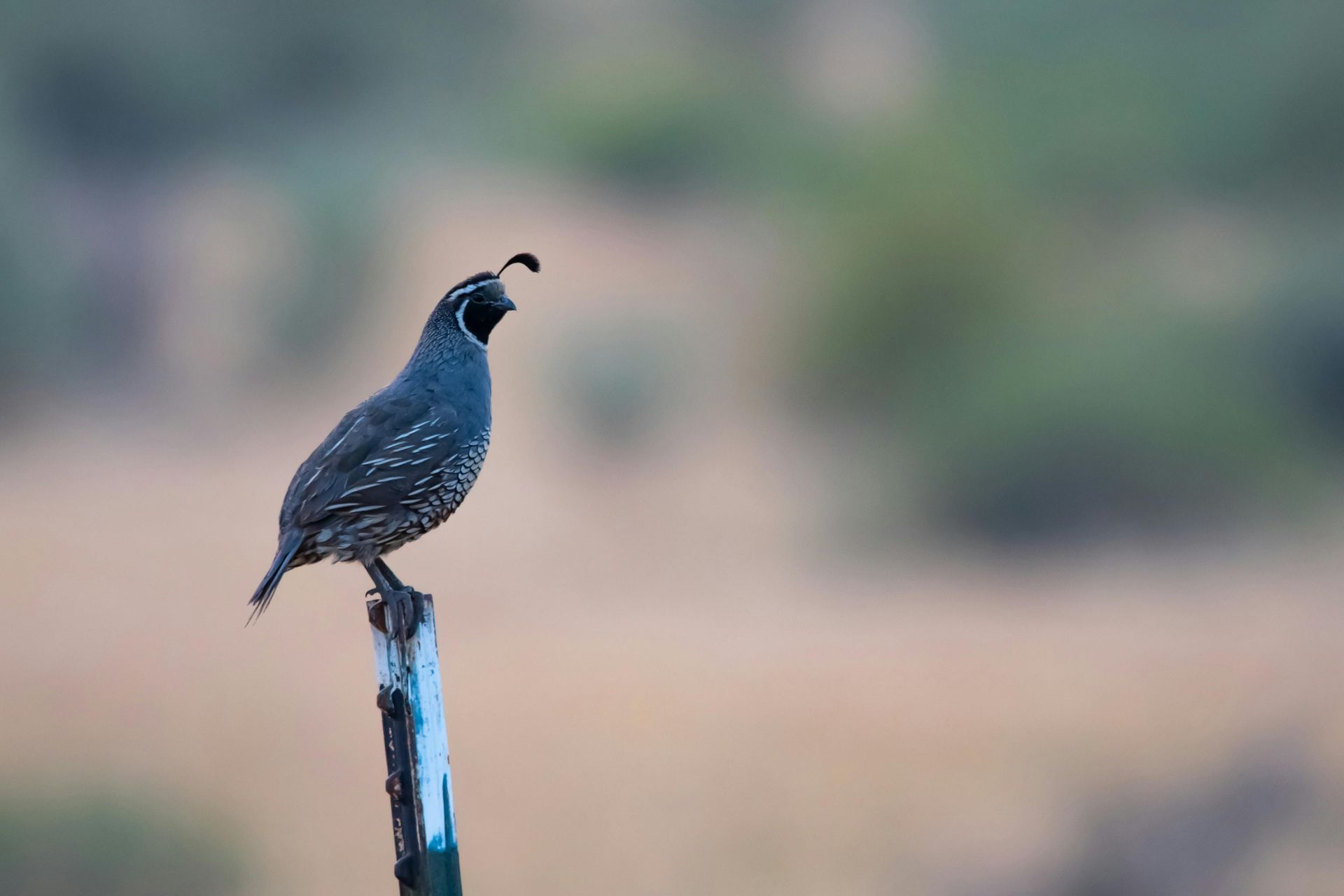Quails are small, ground-dwelling birds known for their round bodies, short tails, and distinctive topknots. Found in grasslands, woodlands, and deserts across North and Central America, quails thrive in a variety of environments. These birds play an important role in ecosystems by controlling insect populations and dispersing seeds.
Quails typically measure 9-11 inches in length and weigh between 5-8 ounces. Their plumage is often a mix of brown, gray, and tan, providing excellent camouflage in their natural habitats. Common species include the California Quail and Gambel’s Quail. Quails are primarily ground foragers, feeding on seeds, grains, insects, and fruits.
Quails are highly social and live in coveys, or small family groups, for much of the year. During the breeding season, males perform elaborate calls and displays to attract mates. Females build shallow nests on the ground, where they lay 10-12 eggs. Chicks are precocial, able to walk and forage shortly after hatching.
Natural predators of quails include hawks, foxes, and snakes. Human-related threats such as habitat loss, hunting, and predation by domestic animals also impact quail populations. Despite these challenges, quails remain common in many regions due to their adaptability.

For your safety and the well-being of wildlife, please observe animals from a distance and avoid touching or disturbing them. If you encounter an animal that appears injured or in distress, contact a licensed wildlife rescue organization for guidance before intervening.
Found An Animal? Not sure how to help a wild animal in need? Learn when to step in, who to call, and how to help safely.
Did You Know?
- The California quail was named the state bird in 1931!
- Quails communicate with a variety of calls, including a distinctive “chi-ca-go” sound.
- Unlike many birds, quails form coveys of up to 20 individuals during the non-breeding season.
- Quail chicks can leave the nest and follow their parents within hours of hatching.
- Their topknot feathers, called plumes, are not used for balance but serve as a visual signal during social interactions.
- Quails take dust baths to keep their feathers clean and remove parasites.
- Some quail species can run up to 12 miles per hour to escape predators.
- Quails rely heavily on camouflage to avoid detection, blending seamlessly into their surroundings.
- They are known for their explosive flight when startled, often flying short distances before returning to the ground.
Problems Faced In The Wild
- Habitat Loss: Urban development and agriculture reduce nesting and foraging areas.
- Predation: Free-roaming cats and other predators pose a significant threat to quail populations.
- Hunting: Overhunting in some regions can impact local populations.
- Climate Change: Altered weather patterns affect food availability and nesting success.
- Disease: Quails are susceptible to avian diseases that can spread in crowded habitats.
- Human Disturbance: Increased human activity near nesting sites can reduce breeding success.
Tips For Cohabitation
- Preserve Native Vegetation: Provide shelter and food sources by planting native shrubs and grasses.
- Avoid Pesticides: Use eco-friendly pest control methods to protect insect populations.
- Keep Cats Indoors: Protect ground-nesting birds by reducing predation.
- Install Brush Piles: Create safe hiding spots for quails in gardens and open spaces.
- Provide Fresh Water: Ensure quails have access to clean water sources for drinking and bathing.
- Educate Others: Share the importance of quails in controlling pests and supporting healthy ecosystems.



